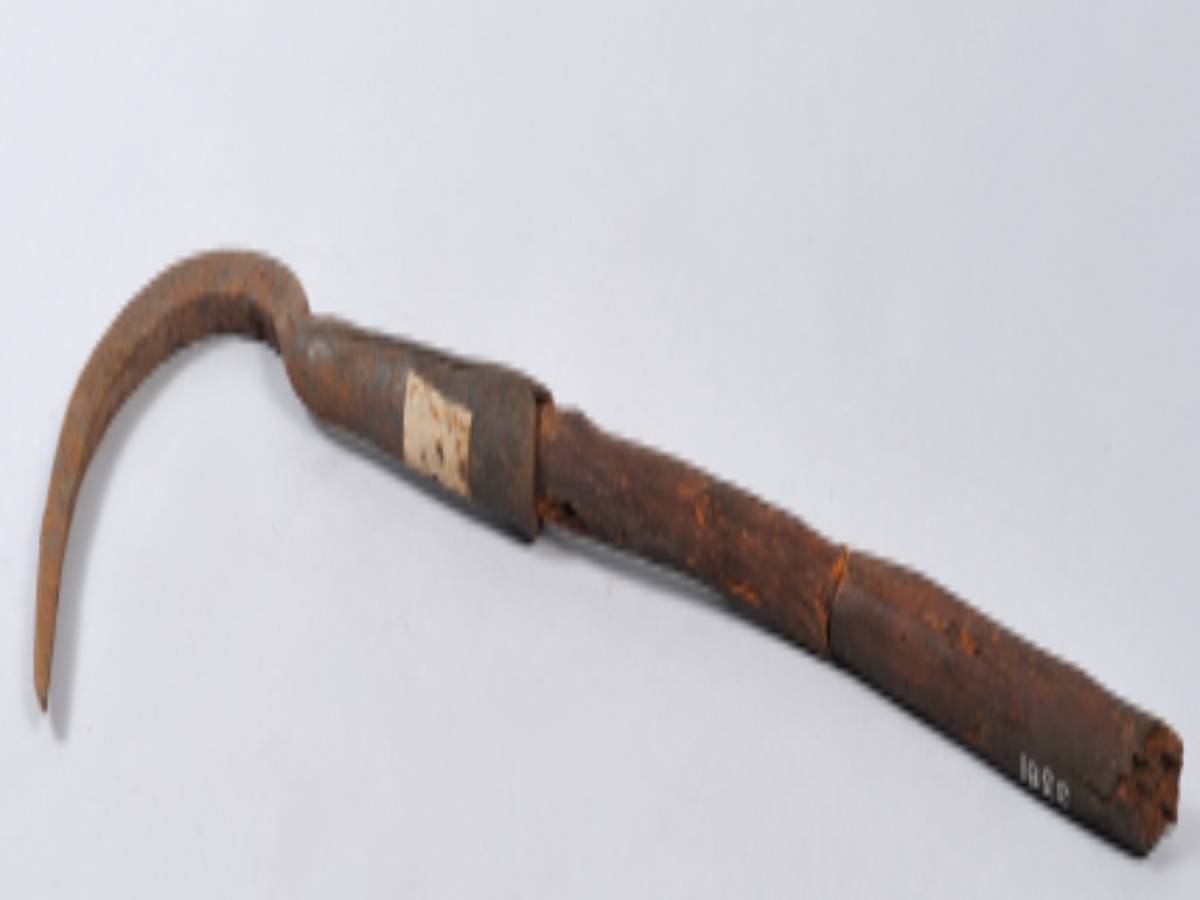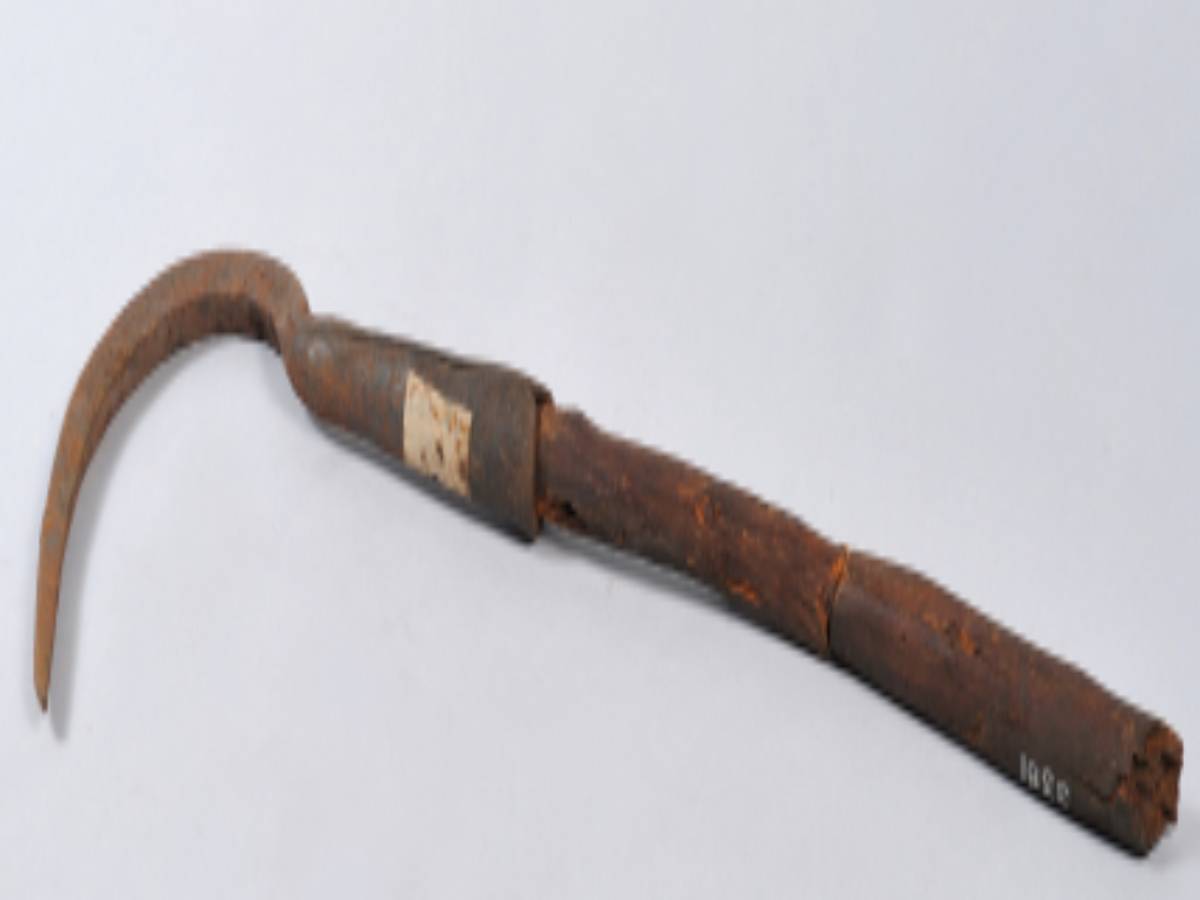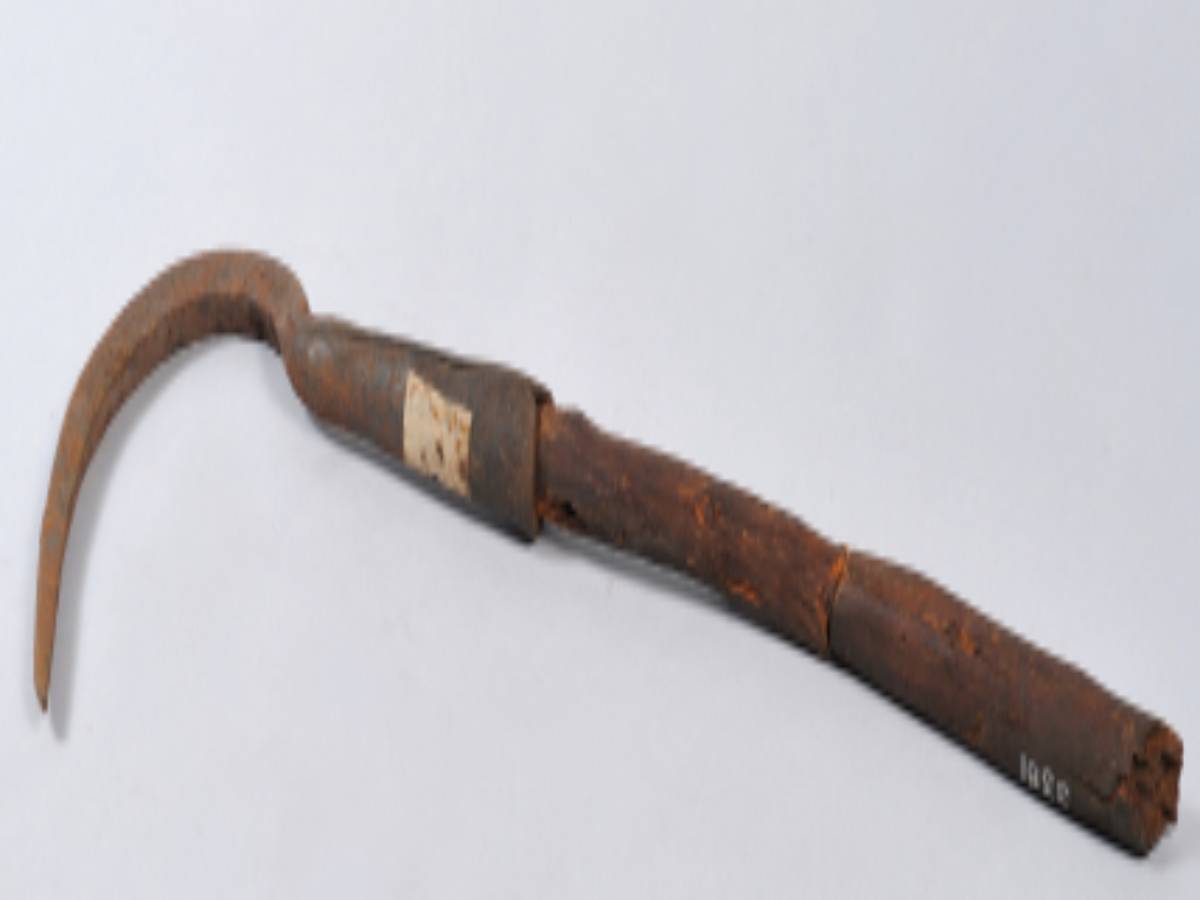State
Tribe Name
Art Type
short description
The Baiga tribe's dry-forest districts Mandla and Dindori use this digging tool in the traditional sense. It consists of a curved iron blade, sharp-edged with a pointed cutting end and with a long tang, set well into it. The wooden handle is firmly fitted into the tang, allowing a grip for proper application in the forest soil.
Thumbnail

Filter Postion
Left
Filter Background
Off
Theme
Filter Header Image

content
Image

description
The Baiga tribe's dry-forest districts Mandla and Dindori use this digging tool in the traditional sense. It consists of a curved iron blade, sharp-edged with a pointed cutting end and with a long tang, set well into it. The wooden handle is firmly fitted into the tang, allowing a grip for proper application in the forest soil.
This tool is actually used for digging edible roots and medicinal tubers, both of which are primary sources of food and medicine for the Baigas. The preferred curved shape of the blade helps it cut the earth with finesse through the hilly and harsh terrain where the Baigas carry out their practices of beware (shifting agriculture).The Baiga's adapted ecological knowledge and the self-sustainable life are reflected in this handmade tool, produced by the local artisan. The working of the tool emphasizes performance, durability, and functionality using local materials.
This tool is actually used for digging edible roots and medicinal tubers, both of which are primary sources of food and medicine for the Baigas. The preferred curved shape of the blade helps it cut the earth with finesse through the hilly and harsh terrain where the Baigas carry out their practices of beware (shifting agriculture).The Baiga's adapted ecological knowledge and the self-sustainable life are reflected in this handmade tool, produced by the local artisan. The working of the tool emphasizes performance, durability, and functionality using local materials.
Image Mode
landscape
promoted
Off
Verified
Off
